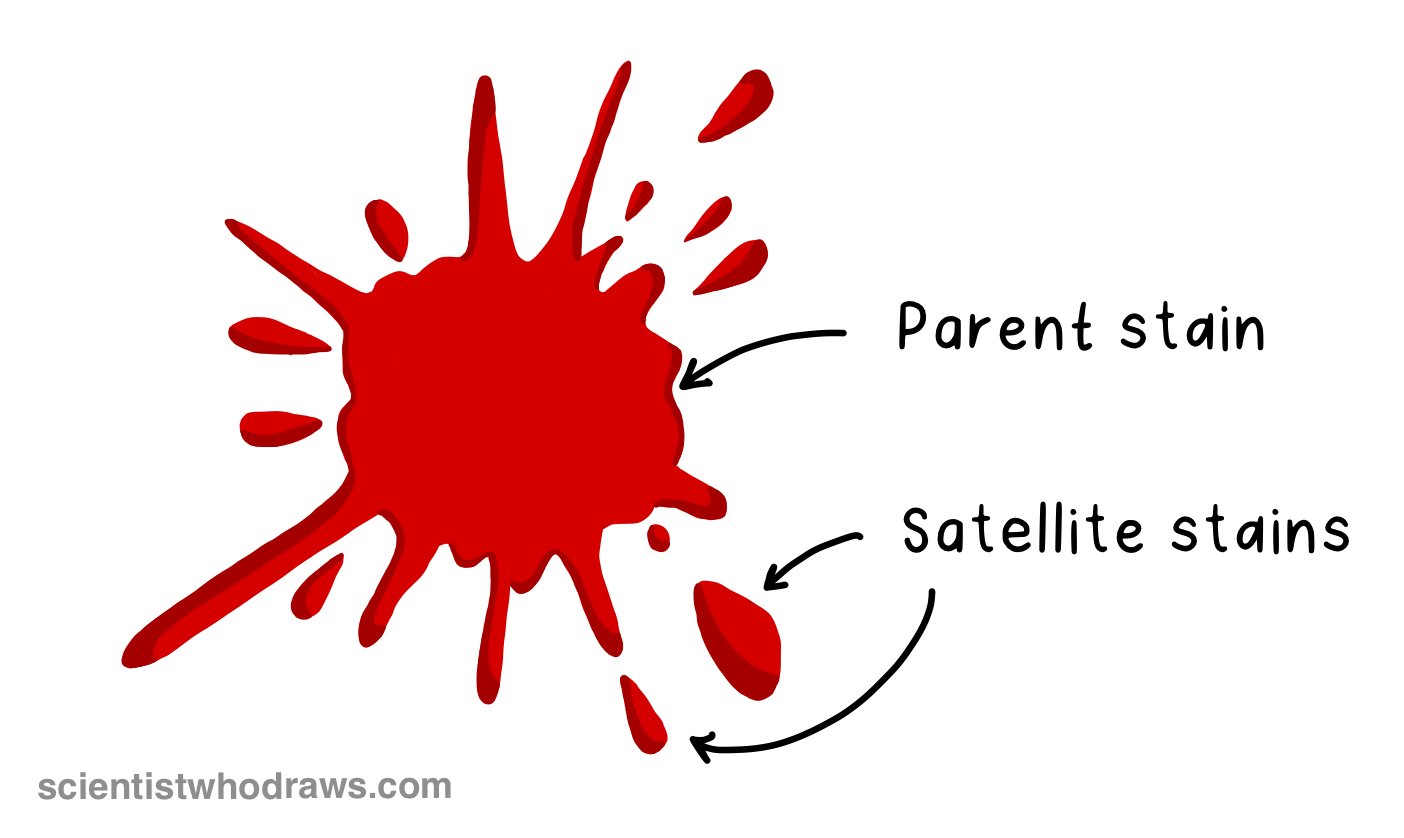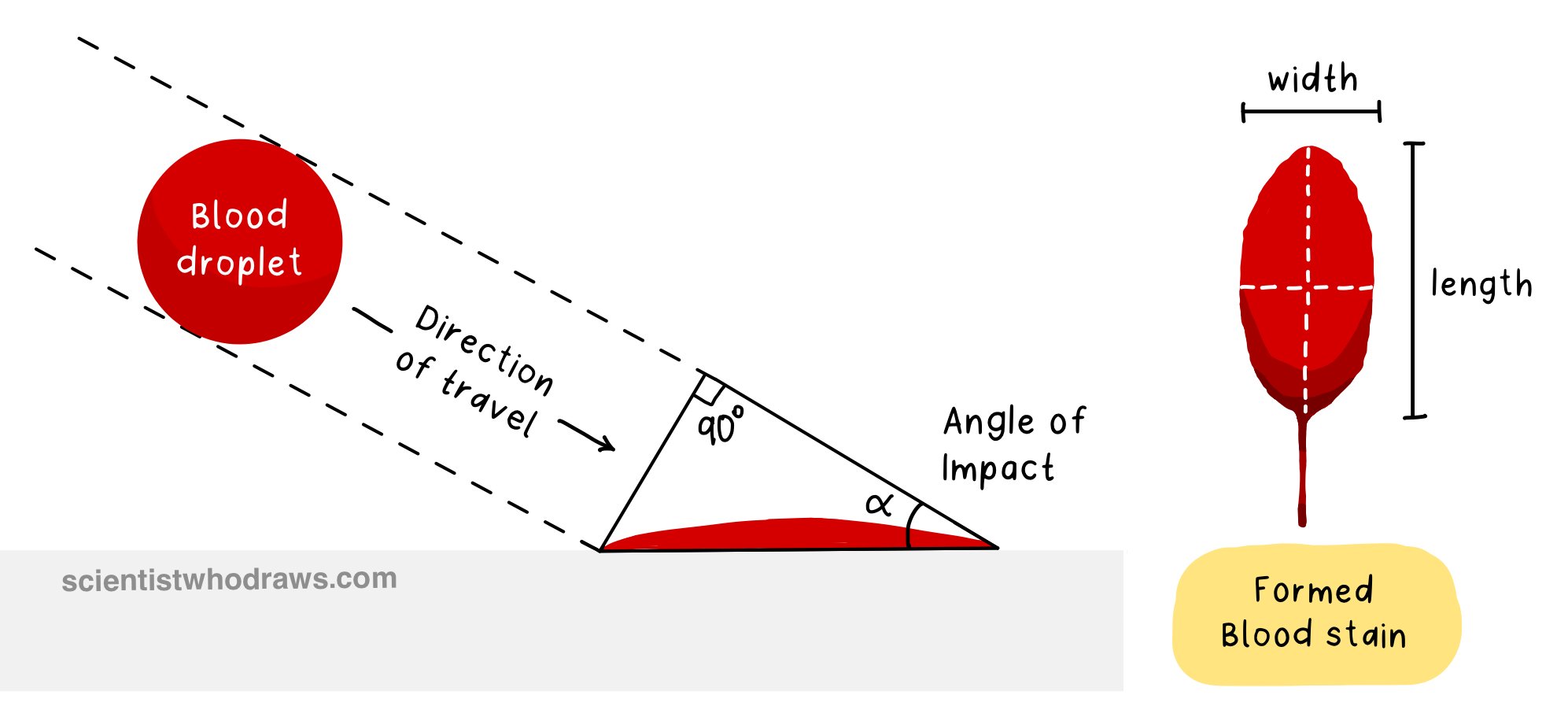Blood Spatter Analysis
Blood spatter analysis or Blood stain pattern analysis (BSPA) is the interpretation of blood stains for the reconstruction of crime scenes to assist in the investigation of violent crimes. A spatter stain refers to the blood stains that result from blood droplets that are projected through the air, due to an external force applied to a source of liquid blood. These stains can vary in size and shape which are affected by the velocity, direction, and angle of impact of the spatter stains, and can be used by forensic investigators to determine the location and direction of the blood source.
ANALYZING SPATTER STAINS
In bloodstain pattern analysis, a parent stain refers to the initial, larger bloodstain that is created when a blood drop falls on a surface. It can be used to determine the origin and direction of the bloodstains. A satellite stain, on the other hand, is a smaller blood stain that is created as blood droplets from the parent stain fall and hit a surface. Satellite stains are typically found in close proximity to the parent stain and can be used to confirm the direction of the bloodstain.
Figure: Formation of parent stain and Satellite stains
1. Velocity of Blood droplets
Determining the velocity of the blood spatter can help in the identification of the weapon and strength of impact. Different weapons vary in the velocities they can impart, resulting in various types of velocity impact spatters. For Example- The velocity of a bullet would be different than the velocity imparted by swinging a hammer. As the travelling speed of blood droplets increases, the size of the spattered stain decreases. Based on different velocities at which blood is travelling, bloodstains can be divided into three categories:
a) Low-velocity impact spatter is formed by a low-speed impact on the blood source. The resulting blood droplets are usually >4 mm in diameter and would have a velocity of less than 5 feet/sec.
b) Medium-velocity impact spatter is usually formed when the blood source is subjected to impact force similar to beating, stabbing, or blunt force injury from a bat, hammer, etc. The resulting blood stains range from 1 to 4 mm in diameter and would have a velocity of 5-25 feet/sec.
c) High-velocity impact spatter is formed when a blood source is subjected to a force associated with a gunshot wound. This results in an extremely high percentage of very fine specks of blood travelling at a speed of 100 feet/sec or above, and all under 1 mm in diameter.
2. Direction of bloodstains
When a blood drop strikes a surface at 90°, the resulting blood stain is almost spherical. However, at an angle between 0° and 90°, an elongated elliptical stain is formed. As the angle of impact increases, the more elongated the blood stain gets. These elongated blood stains have a characteristic “tail” or “spine” at one end, pointing towards the direction of travel.
Figure: Direction of bloodstains and angle of impact
3. Angle of Impact
In bloodstain pattern analysis, the angle of impact refers to the angle at which a blood droplet impacts a surface. The angle of impact (α) can be calculated by measuring the width (w, also called the minor axis) and the length (l, also called the major axis) of the parent stain using the following trigonometric equation:
sin α = w l
To avoid any human error, bloodstain pattern analysis software can be used to get precise and reproducible measurements to determine the angle of impact.
Figure: Calculation of Angle of Impact in Blood Spatter Analysis



